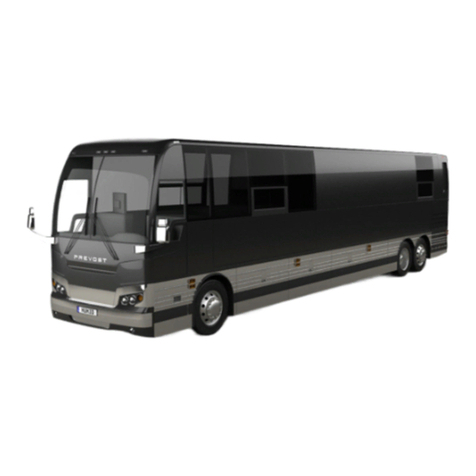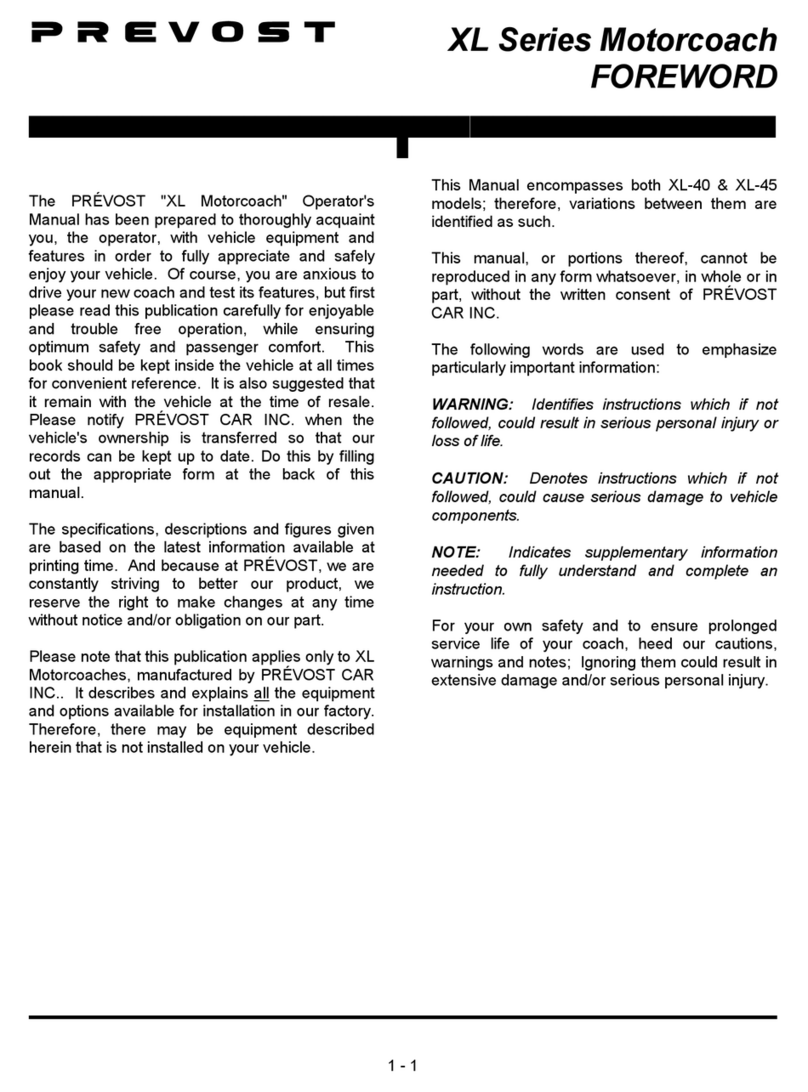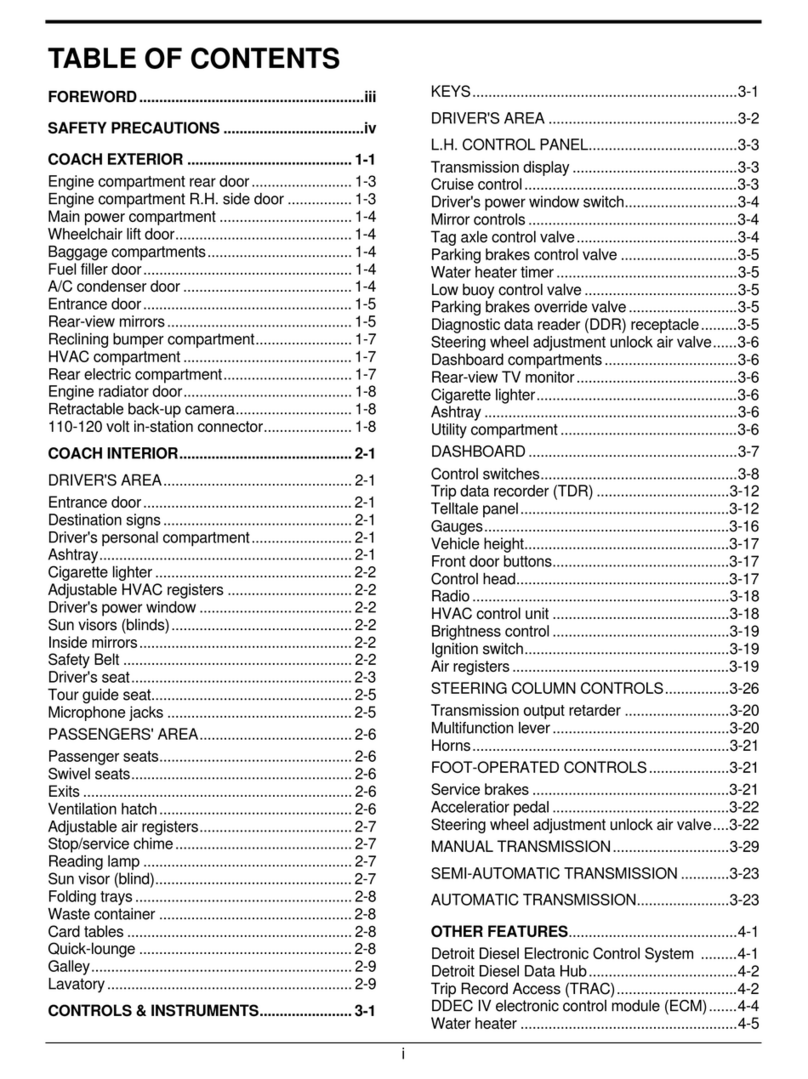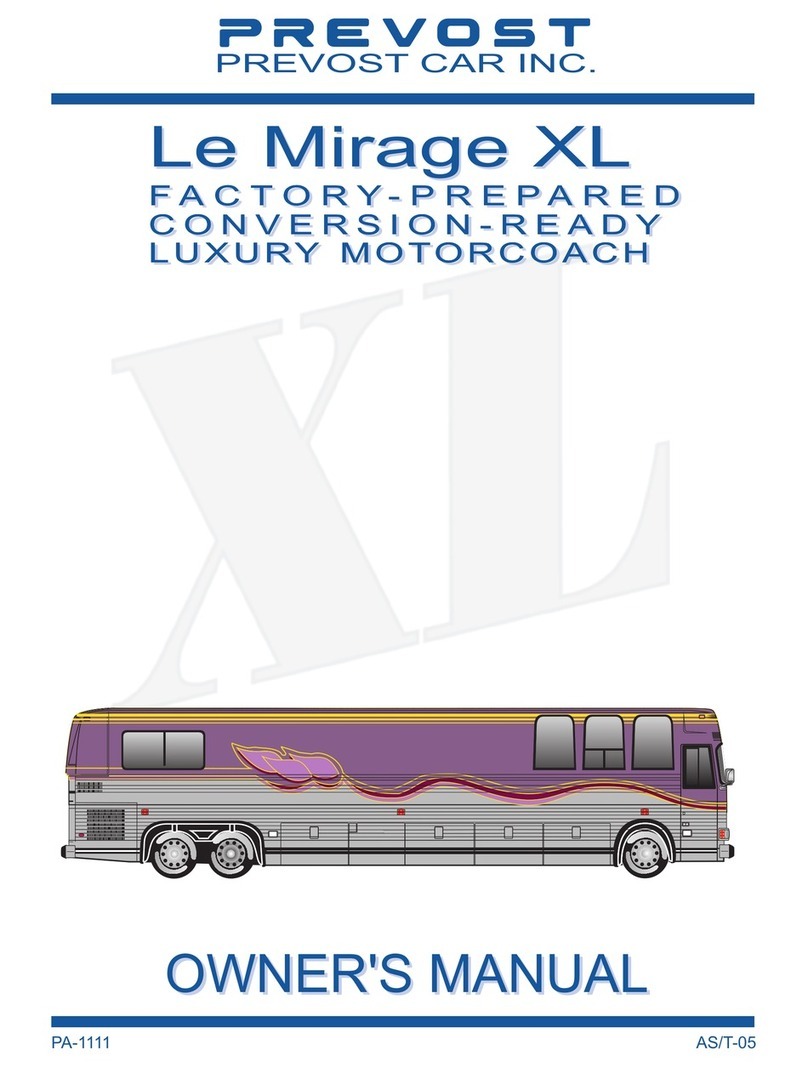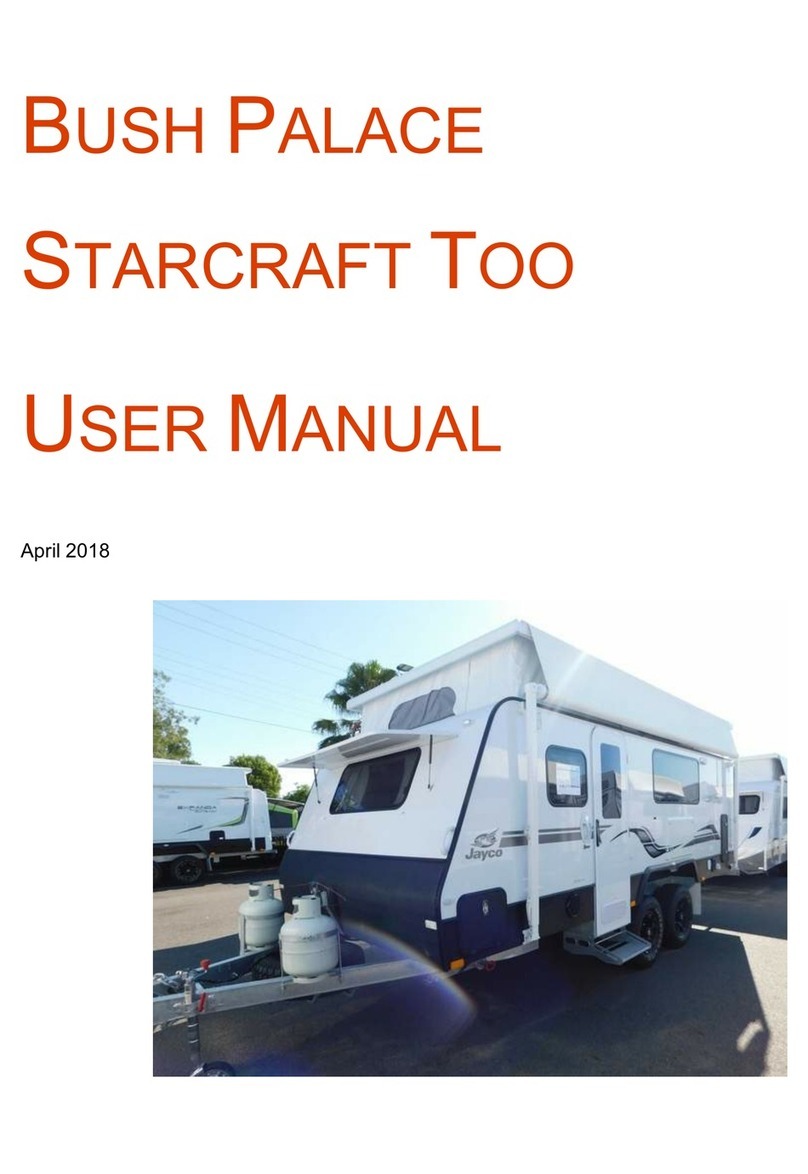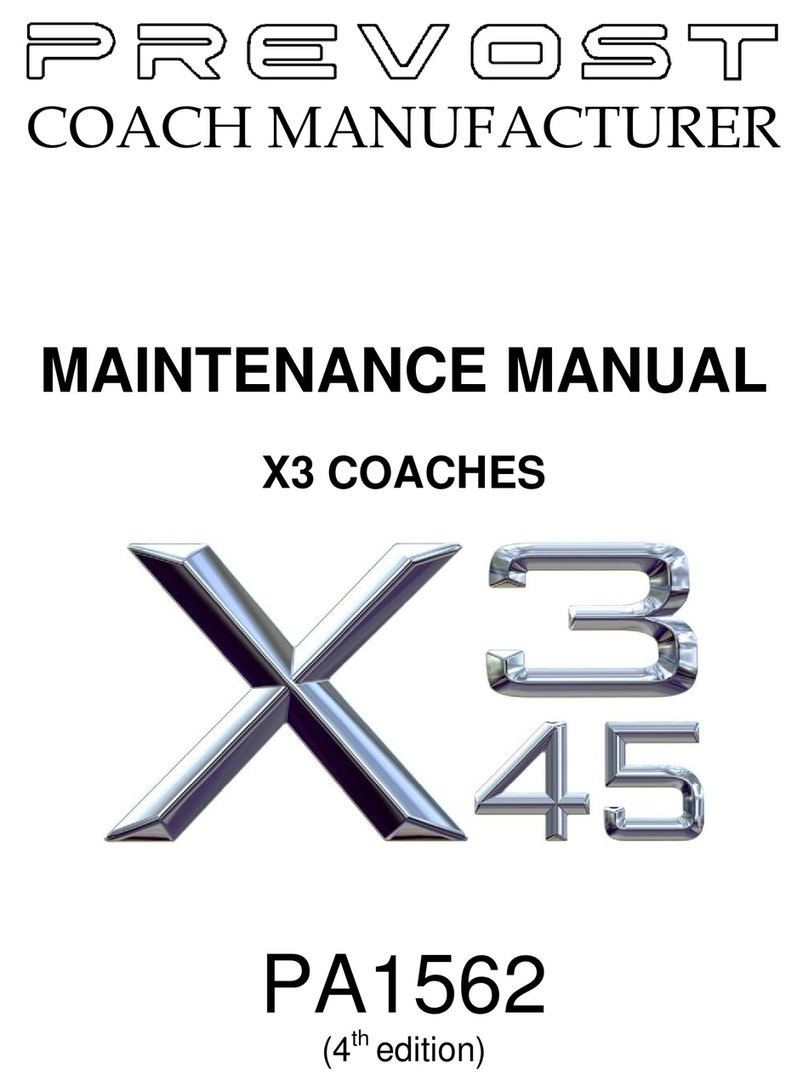
TABLE OF CONTENTS
OTHER FEATURES ......................................... 4-1
DETROIT DIESEL ELECTRONIC
CONTROL (DDEC) SYSTEM ..........................4-1
DDEC IV ELECTRONIC CONTROL
MODULE (ECM)................................................4-2
MESSAGE CENTER DISPLAY (MCD) ............4-2
Gauge mode...................................................... 4-3
Fuel economy mode..........................................4-3
Clock/dist mode................................................. 4-4
Set-up mode...................................................... 4-5
Diagnostic mode................................................4-7
Data log mode................................................... 4-9
Passwords.........................................................4-9
PRODRIVERTM................................................4-10
WORLD TRANSMISSION ELECTRONIC
CONTROL UNIT (ECU)..................................4-10
TRANSMISSION RETARDER........................4-11
JACOBS ENGINE BRAKE..............................4-11
ANTI-LOCK BRAKING SYSTEM....................4-11
RETRACTABLE TAG AXLE...........................4-12
VARIABLE ASSISTANCE STEERING GEAR4-12
COOLANT HEATER.......................................4-12
Switching the heater on...................................4-12
Switching the heater off................................... 4-12
Coolant heater timer........................................4-12
110-120 VOLT CONNECTOR........................4-17
KEYLESS ENTRY SYSTEM...........................4-18
Keyless operating instructions.........................4-18
Programming a personal code........................4-18
Remote entry transmiter..................................4-19
Programming tansmitters................................4-19
STARTING AND STOPPING
PROCEDURES................................................. 5-1
STARTING ENGINE FROM DRIVER’S
COMPARTMENT ............................................. 5-1
Starting engine................................................... 5-1
Stopping engine.................................................5-1
STARTING ENGINE FROM THE ENGINE
COMPARTMENT..............................................5-1
Starting engine................................................... 5-1
Stopping engine.................................................5-1
COLD WEATHER STARTING..........................5-2
Engine block heater...........................................5-2
Engine warm-up ................................................ 5-2
World Transmission (WT) warm-up .................5-2
JUMP STARTING..............................................5-2
EMERGENCY FEATURES AND
SAFETY EQUIPMENT......................................6-1
EMERGENCYEXITS ........................................6-1
Awning windows.................................................6-1
Sliding windows..................................................6-1
Fixed windows....................................................6-1
Roof escape hatch.............................................6-1
EMERGENCY AIR-FILL VALVES.....................6-2
EMERGENCY AND PARKING BRAKES..........6-2
SAFETYEQUIPMENT.......................................6-3
Fire extinguishers...............................................6-3
First aid kit..........................................................6-3
Warning reflectors..............................................6-3
Jack/Tools..........................................................6-3
DAYTIME RUNNING LIGHTS...........................6-3
FOG LIGHTS.....................................................6-3
CORNERING LIGHTS.......................................6-4
COMPARTMENT LIGHTING............................6-4
MUD FLAPS AND SPLASH GUARDS .............6-4
BACK-UP CAMERA...........................................6-4
BACK-UP ALARM..............................................6-4
Back-up alarm cancel switch.............................6-4
ALARM SYSTEM...............................................6-4
SPARE PARTS KIT...........................................6-4
CARE AND MAINTENANCE............................7-1
CLEANING.........................................................7-1
Seat upholstery ..................................................7-1
Plastic & vinyl .....................................................7-2
Windows.............................................................7-2
Stainless steel....................................................7-2
Formica ..............................................................7-2
Carpet.................................................................7-2
Rubber components...........................................7-2
Floor cleaning.....................................................7-2
Exterior surfaces................................................7-2
Tar or oil .............................................................7-3
Insects................................................................7-3
Tree sap.............................................................7-3
Windows.............................................................7-3
Wiper blades......................................................7-3
FLUID LEVEL VERIFICATION..........................7-3
Engine oil level ...................................................7-3
Automatic transmission oil level.........................7-4
Power steering fluid level...................................7-4
Radiator fan gearbox oil level ............................7-5
Wheel bearing oil level.......................................7-5
ii
